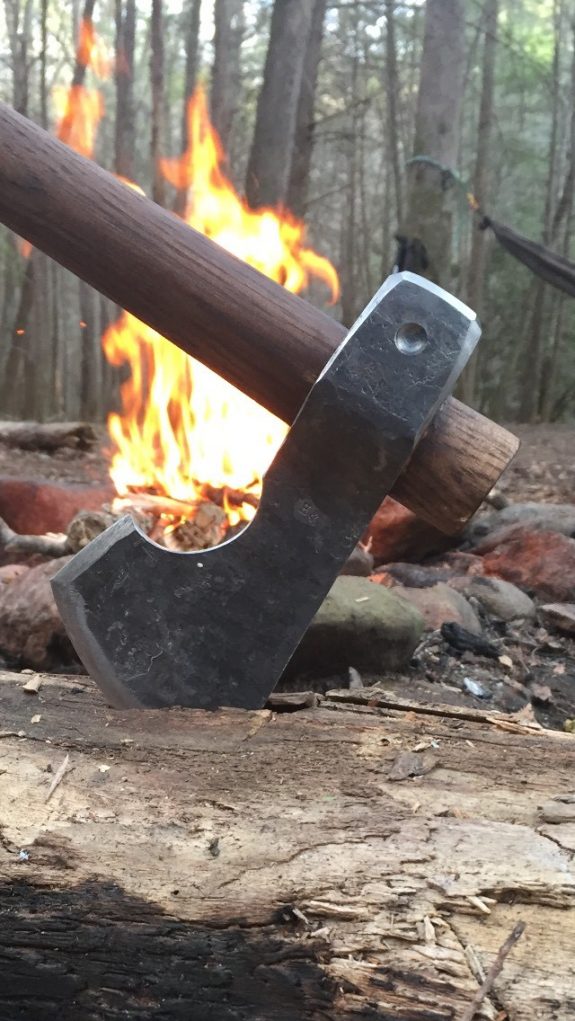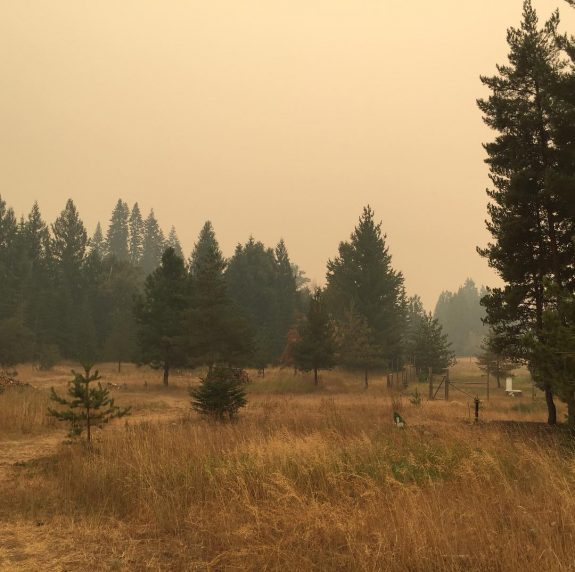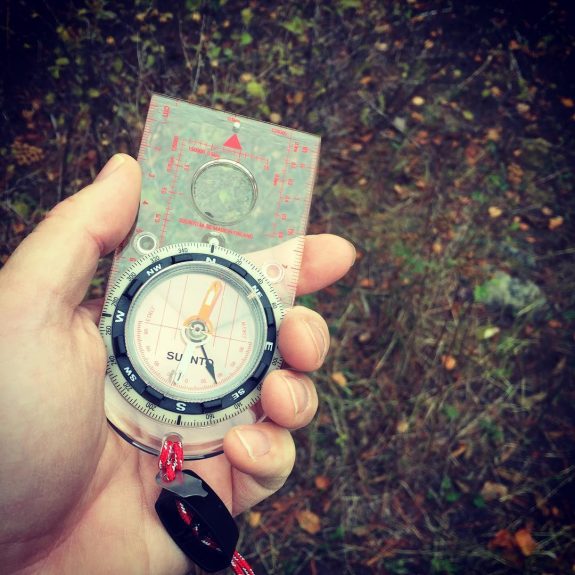Our review of the GunfightersINC Kenai Chest Holster is one of the most visited reviews ever posted on this site and we get a number of emails asking questions about it. One of the most common questions I receive regarding the Kenai is how it compares to the Hill People Gear Kit Bag. Well, I happen to be a long time user of both and that sounds like an idea for a post to me!
Links:
Kenai Chest Holster
Hill People Gear Kit Bag
The Same but Different
At the most basic level, the Kenai and Kit Bag are similar. They are both designed to carry a handgun in the most advantageous position for many outdoor pursuits – on the chest. However, the functionality and materials used are drastically different. This leads to different strengths and weaknesses for both, enough that I have purchased and use both depending on the situation.
Both are better than tucking your handgun into your backpack or not carrying it at all!
Background with the Kit Bag
My background with the Hill People Gear Original Kit Bag is fairly long. I’ve owned one since the first or second run. This was before they added a dummy cord loop and Velcro in the handgun compartment. I simply wanted a way to carry a handgun that was comfortable and concealed while backpacking. The Kit Bag worked well for that but I never really completely filled all the carrying capacity offered by the Original Kit Bag. I eventually sold it and replaced it with a Runners Kit Bag.
The Runners Kit Bag is ideal for me. It has the same footprint as the Original Kit Bag but is slimmer overall since the “middle” cargo pocket has been removed. It is large enough to keep my full sized handgun concealed but significantly slimmer while still offering more than enough carrying capacity to carry some basics.

Background with Kenai Chest Holster
I’ve been using a Kenai Chest Holster since late 2015. I find it to be the best interpretation of a “guide holster” available. GunfightersINC used their experience in the outdoors and some modern materials to bring the guide holster concept into the current century. It is slimmer than any traditional leather guide holster could ever hope to be, offers better retention without the need for a strap, creates a better draw stroke, and its modular.
I’ve worn this holster extensively and I find it to be extremely comfortable and extremely easy to draw from. They even designed the harness so none of the adjusters had to be positioned on the back where it could catch on wader shoulder straps or cause hotspots under a backpack. This is the level of thoughtfulness that went into this holster.
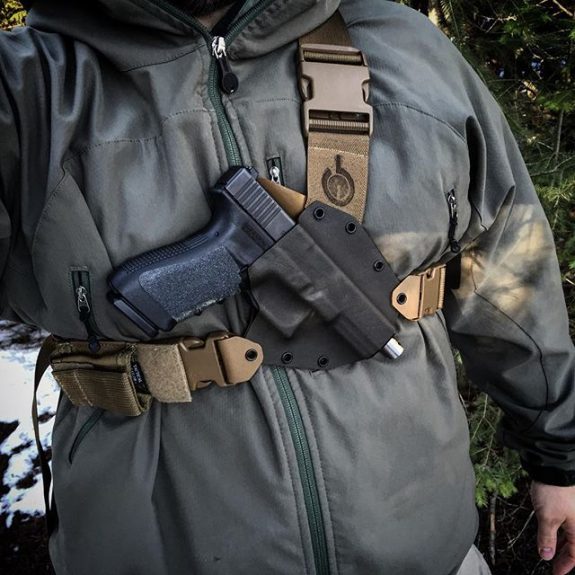
Get Both!
For a long time, the Original Kit Bag was the only way I had to carry a handgun on my chest and it worked. When I added the Kenai Chest Holster to my gear bin, I wondered if it would replace my Kit Bag but it hasn’t. It has only highlighted the strengths of both carry methods.
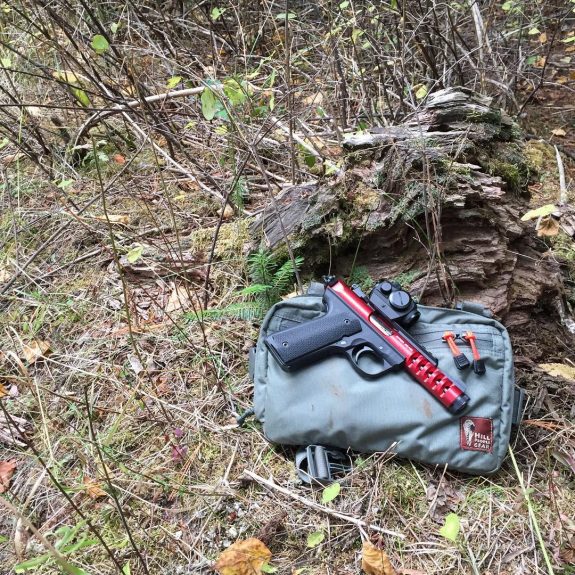
I can’t replace the Kit Bag because it offers three important benefits over the Kenai:
- It can conceal a handgun without the use of a covering garment.
- It can carry a huge variety of handguns from small to large.
- It can carry additional items in a location that is easy to access.
The Kenai is surprisingly concealable under a cover garment but I live in an area that sees triple digit heat in the summer. I can’t always use a covering garment. I’ve used my one Kit Bag to carry everything from a Glock 43 or J-Frame, to a Ruger 22/45 Lite with RDS, to a large frame revolver. Additionally, the Kit Bag is great for carrying items like nav tools (compass, GPS, UTM grid, etc.), basic survival goodies (lighter, some bits of tinder, etc.), and other items you may want close at hand. It may not seem like a big deal but the efficiency of reaching to your chest for gear like chapstick or a GPS unit versus having to stop and remove your pack is not trivial when you are trying to cover ground.

I can’t replace the Kenai Chest Holster because it offers three important benefits over the Kit Bag:
- It is more compact.
- It offers a faster, more streamlined draw stroke.
- It is more concealable.
The Kenai Chest Holster is smaller and slimmer than the Kit Bag that makes it a little easier to dress/pack around. That also means it is cooler to wear and that can be big deal when it is 95+ with less than 15% humidity. The Kenai’s draw stroke is very fast and straightforward. There is nothing between your hand and a full firing grip on your handgun with Kenai. The Kit Bag is fast but the Kenai is faster – how much faster will depend on your specific gear and some training. Finally, if I absolutely need to conceal the fact that I am carrying and the weather permits, the Kenai conceals under a coat easily.

I live in a very rural area that is a destination for outdoor recreation. That means that we have a healthy mix of the NRA crowd and Sierra Club crowd. Our property is on the outskirts of National Forest land that contains Grizzly habitat. My choice for which carry “system” to use often comes down to balancing those factors.
If I am headed to a popular trail, I know I am more likely to encounter the Sierra Club side of the house and prefer to remain discreet in how I carry. I usually reach for the Kit Bag in that case. If I am working or hiking on our own property, I don’t have to worry about concealment and I almost always use the Kenai. If I am going on a very long day hike (or overnighter), I am more likely to reach for the Kit Bag because of the convenience of carrying important items in the outer pocket. If I am going into an area where the grapevine says there was recent bear activity, I am inclined to take the Kenai.
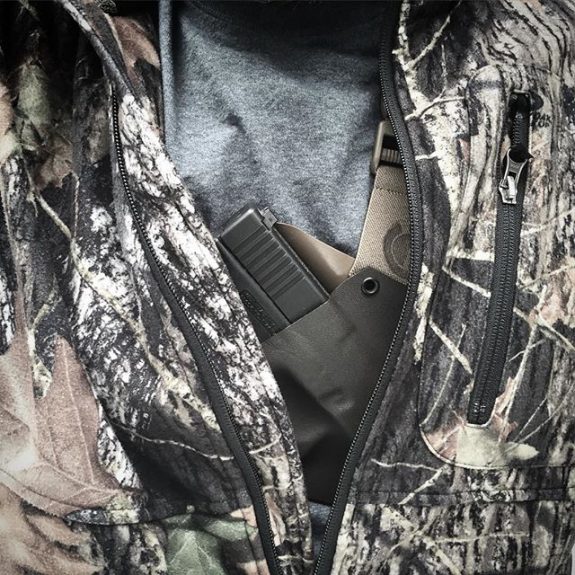
Wrap Up
There are always factors to balance when deciding which gear works for you. If you are knee deep in big coastal brown bears while fishing for salmon you might choose differently than you would if you were knee deep in college kids while hiking the Appalachian Trail. For me, both the Kenai Chest Holster and Hill People Gear Kit Bags have been invaluable and I am glad I have both in my gear box.


